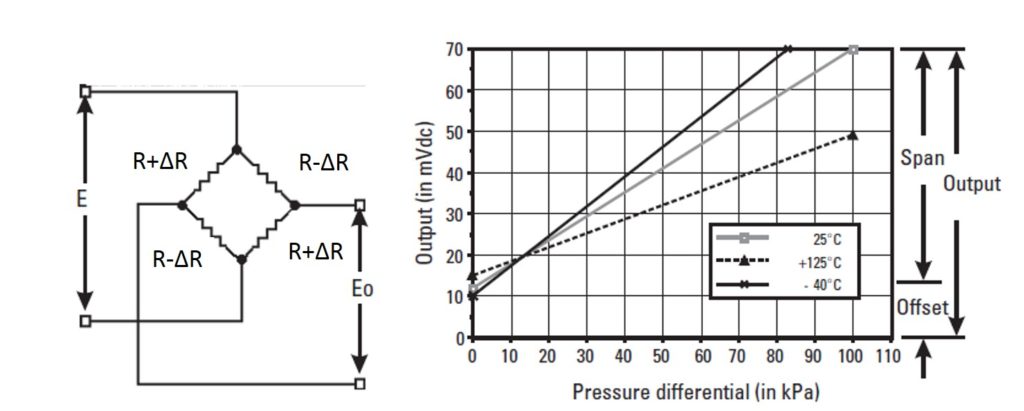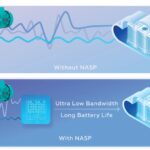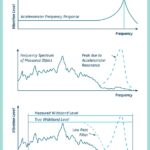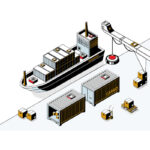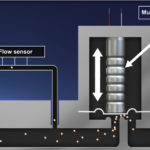Piezoelectric is the property of a material to generate a voltage when mechanical force is applied to it. In contrast, the piezoresistive effect is the property of a material’s resistivity to change when subjected to a mechanical force. In either case, the mechanical force or stress can be compression, tension or a bending force.
Ceramic and quartz crystal are common piezoelectric materials for sensing pressure. Mechanical force on the material generates a charge, typically in the picocoulomb range, that is amplified and converted to voltage signal. The electric signal generated by the crystal decays rapidly so they are not used for static measurements but for dynamic pressure measurements up to 100 kHz. For example, microphones often use quartz crystal for transducing pressure into electricity. Underwater explosions can also be detected by piezoelectric pressure sensors.
The piezoresistive effect is used in strain gauges for measuring pressure. Commonly implemented in a 4-arm Wheatstone bridge, the change in resistance, ΔR, is additive in two legs and subtractive in the other two. Either a constant current or a constant voltage is applied to generate an output with constant voltage being the more common approach.
Both traditional bonded and unbonded strain gauges as well as integrated silicon pressure sensors employ Wheatstone bridges. In the silicon pressure sensor, applying several volts typically delivers an output in the millivolt range for a basic sensor. This requires signal conditioning for zero offset and temperature compensation and amplification to make them useful in most applications. They can make static and dynamic measurements.